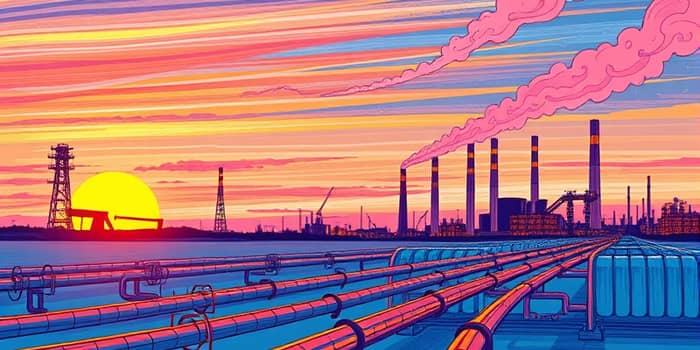
In 2024, global oil demand hovered just below critical global economic thresholds of 102 million barrels per day. This period marked the culmination of a robust post-pandemic industrial rebound, reigniting consumption patterns that had flattened in the previous two years. Amid shifting geopolitical landscapes, policymakers and market watchers now forecast sustained growth through 2030.
Analysis from the International Energy Agency (IEA) indicates that oil demand will climb by approximately 2.5 mb/d between 2024 and 2030, peaking around 106–108 mb/d. Annual increases—0.7 mb/d in 2025 followed by 0.8 mb/d in 2026—contrast sharply with the modest 0.3 mb/d average seen between 2022 and 2024. A fuller industrial restart, especially across China, India, and other emerging markets, underpins this upswing.
Yet the IEA warns that later in the decade, structural trends cut into consumption, as efficiency measures and energy transitions gain momentum. By 2030, growth will likely slow to a trickle, balancing rising investment in renewables against persistent demand from petrochemicals and transport sectors.
Several industries will propel oil consumption in the coming years, with particular emphasis on:
Collectively, these sectors act as the backbone of rising liquids demand, offsetting declines in passenger transport where EV penetration accelerates.
The split between non-OECD and OECD regions grows ever more stark. Nearly all net demand growth to 2030 will originate outside the OECD, led by China, India, and Southeast Asia. Although China’s oil appetite in 2030 is only marginally higher than in 2024—due to rapid EV adoption—India and Southeast Asia continue robust expansions fueled by urbanization and infrastructure investments.
EV adoption represents a major headwind to transport fuel consumption. With about 58 million electric vehicles on roads by end-2024, they displaced less than 1 mb/d, but projections suggest over 5 mb/d of oil demand could evaporate by 2030—half of which will be in China. In Europe and China, where incentives and regulation are strongest, the transport sector’s oil use growth will be effectively capped.
Governments are also grappling with tax revenue losses; an estimated $9 billion dropped from global fuel levies in 2022 due to this shift.
Public and private investment in charging infrastructure is essential to sustain EV growth. Countries with robust network build-outs, like Norway and China, illustrate how policy support and innovation can accelerate fleet turnover, further challenging oil demand trajectories.
On the supply side, global liquids output is poised to expand by 1.3–1.4 mb/d annually through 2026, driven by non-OPEC producers, notably the U.S. and Brazil. U.S. shale—once expected to hit 10.6 mb/d—now looks set to plateau around 9.8 mb/d by 2030. Meanwhile, OPEC+ cuts will temper supply but remain below target volumes.
This dynamic creates a comfortably supplied oil market through 2030, according to the IEA, exerting downward pressure on prices. Brent crude is forecast to average $73 per barrel in 2025, versus roughly $80 in 2024, with WTI following a similar path.
Investment in upstream capex continues to favor tight oil and deep-water projects, which shape production profiles. Brazilian offshore expansion and U.S. shale efficiency improvements will be critical in determining non-OPEC supply growth in the short to mid-term.
Several factors could disrupt even the most optimistic projections:
Stakeholders must weigh these risks carefully, as they could tip the balance toward tighter markets or deeper cutbacks in demand.
As global economies advance, oil demand will reflect the tug-of-war between industrial resurgence and decarbonization mandates. Investors should monitor non-OECD infrastructure projects for early demand signals.
Governments must assess the pace of transport electrification and its fiscal impacts, including revenue shortfalls from fuel taxes.
Energy companies would be prudent to hedge against geopolitical shocks, diversifying supply chains and investing in strategic reserves.
Technological innovation—such as carbon capture and advanced biofuels—could extend oil’s role in hard-to-abate sectors. Collaboration between oil majors and governments will dictate whether a balanced approach to energy security and climate goals emerges.
The improved oil demand outlook, driven by a resurgent global industrial sector and strategic policy frameworks, offers a nuanced narrative. While growth is assured through mid-decade, the accelerating energy transition and evolving consumer preferences will test the sector’s resilience. Stakeholders who navigate these currents with agility can capitalize on opportunities in both traditional and emerging energy landscapes.
References













